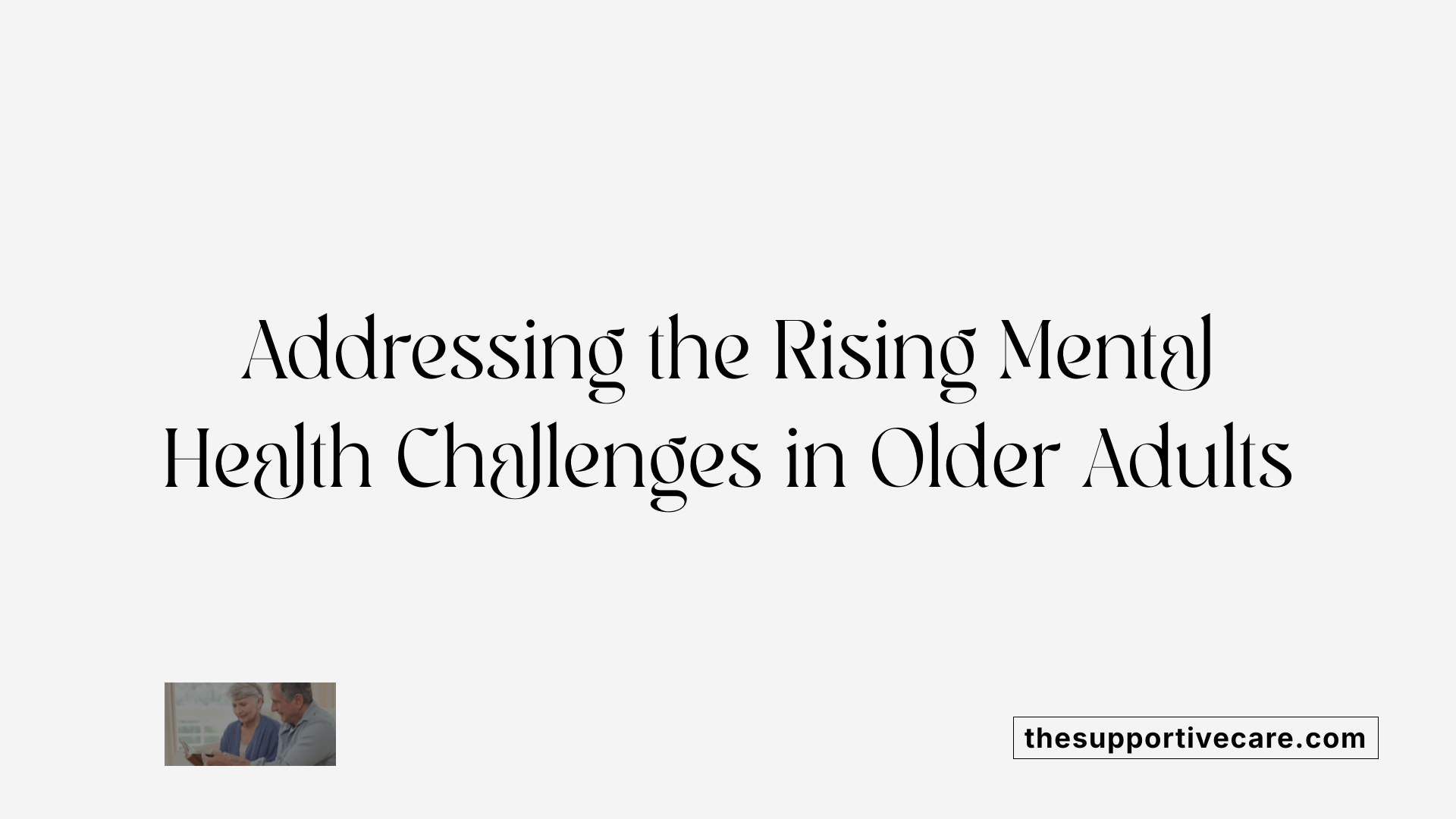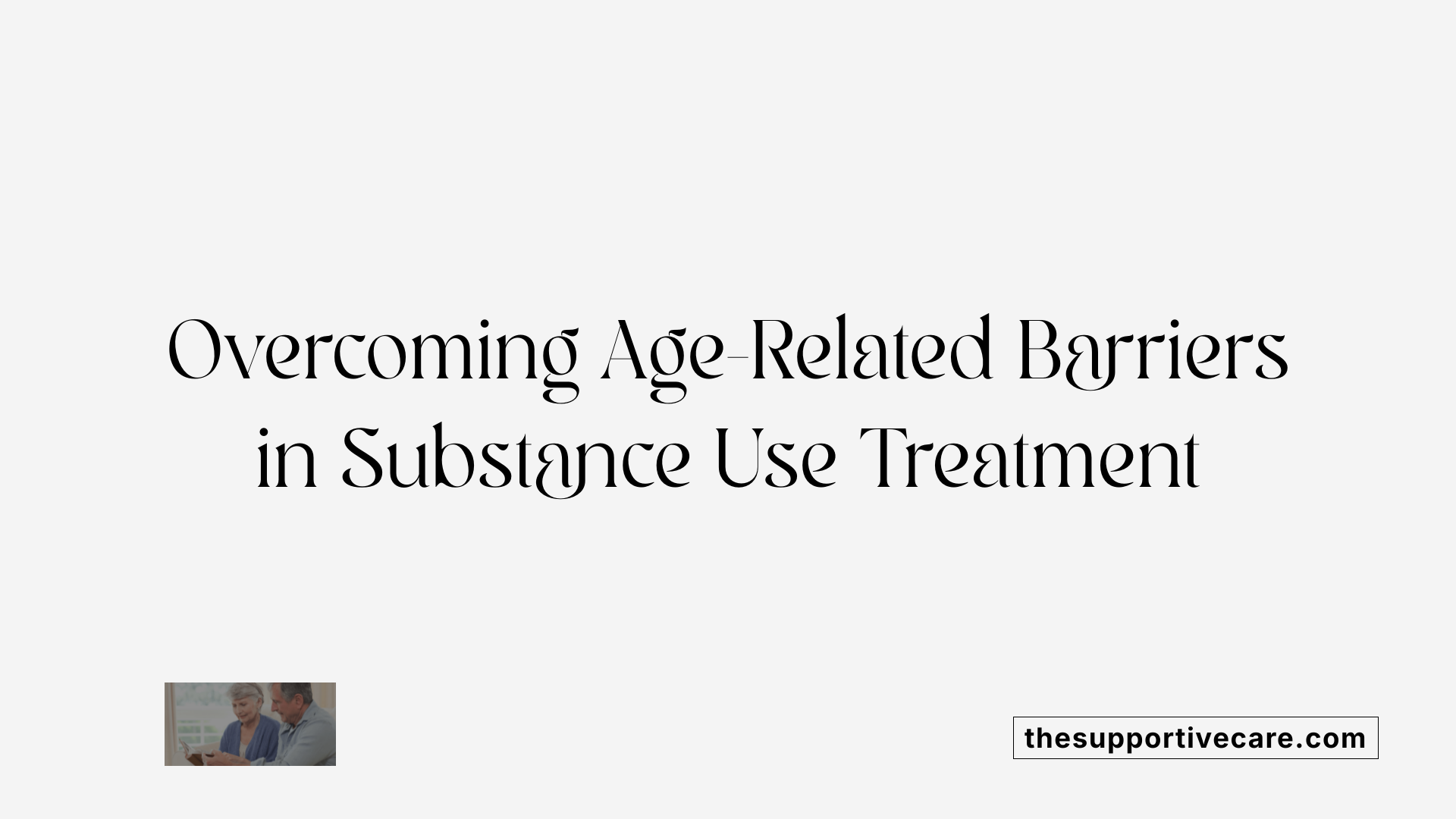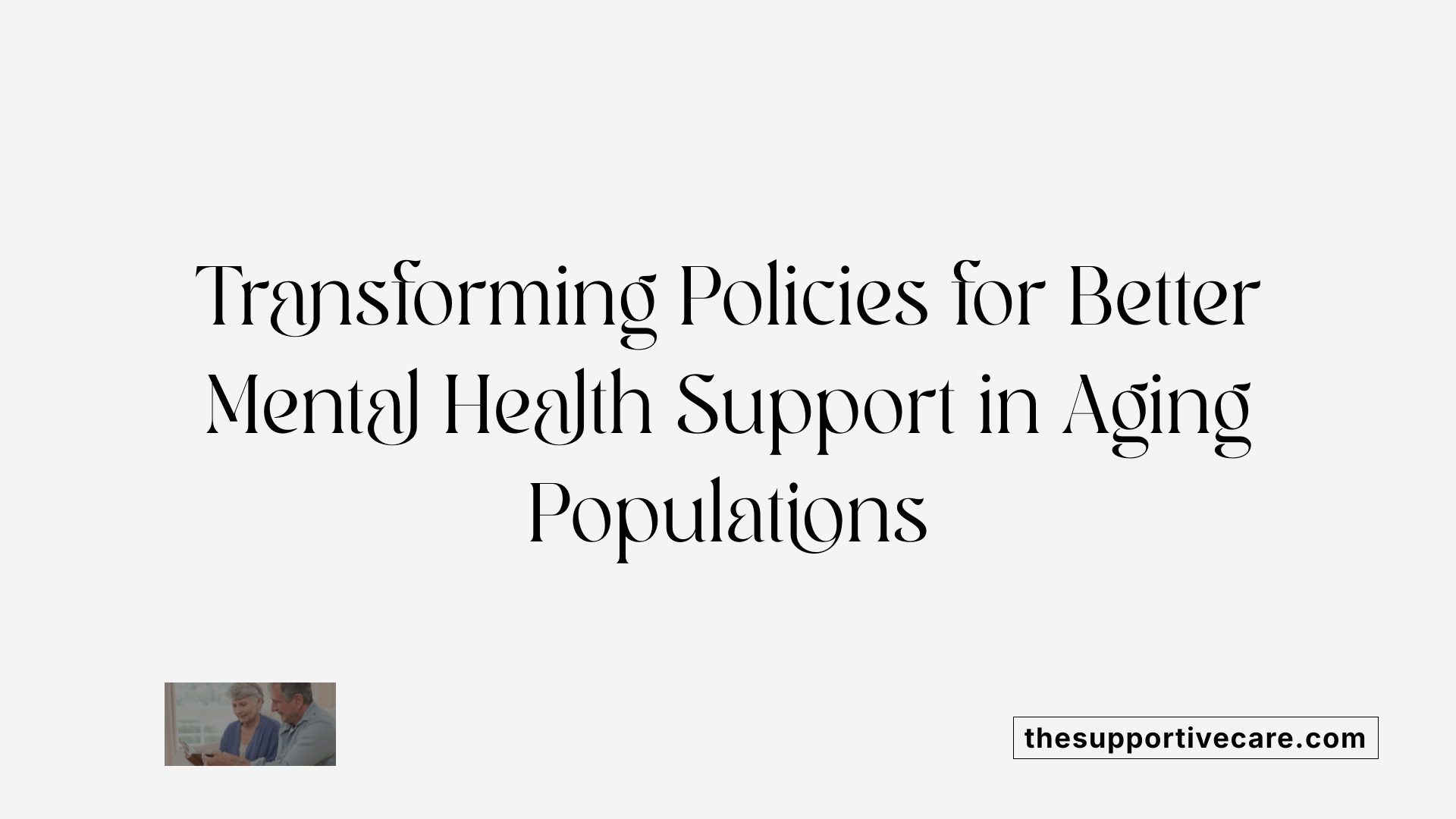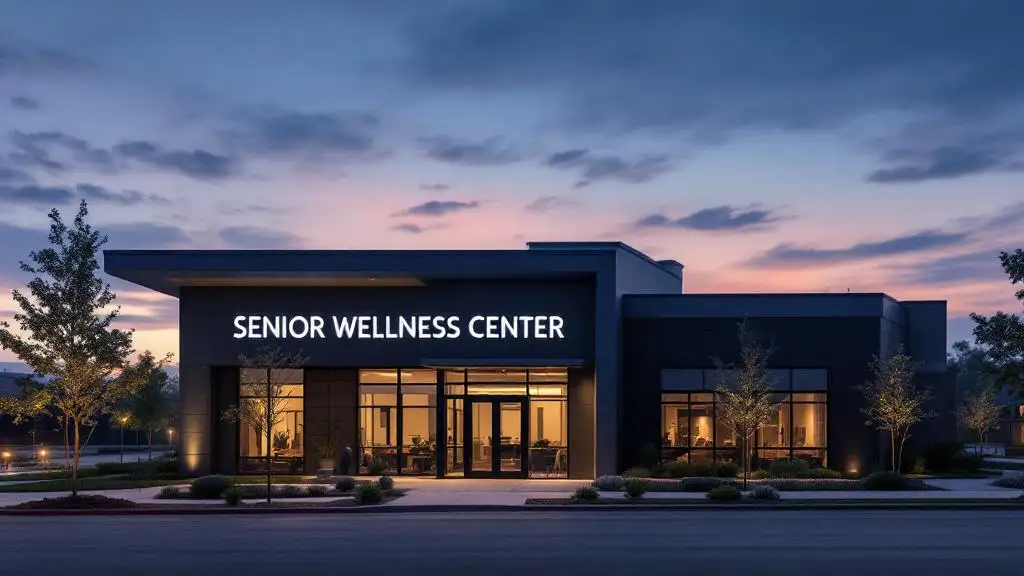Understanding the Challenges Seniors Face in Mental Health Care
As the global population ages, mental health disorders in older adults are becoming an increasingly critical public health concern. Despite advancements in treatment, many seniors exhibit resistance to mental health care due to unique physiological, psychological, and social factors. This article explores the multifaceted challenges surrounding mental health treatment resistance in seniors, highlights comprehensive and integrated treatment approaches for substance abuse and co-occurring disorders, and advocates for person-centered, multidisciplinary strategies to improve outcomes in this vulnerable population.
The Growing Burden of Mental Health Disorders Among Seniors

How Does the Aging Population Affect Mental Health?
The global increase in the aging population is leading to a notable rise in mental health disorders among older adults. This demographic shift places a growing demand on healthcare systems, as treating mental health in seniors is often labor-intensive and complicated by the presence of comorbid physical illnesses. Challenges like social isolation, ageism, and stigma compound the impact, making comprehensive assessment and integrated care essential.
What Are the Most Prevalent Mental Disorders in Older Adults?
Several disorders contribute significantly to the mental health burden in seniors. Neurocognitive disorders, including Alzheimer's disease, stand out prominently. Additionally, major depression, schizophrenia, and substance use disorders are common and disabling conditions. These disorders often coexist with other health problems, requiring coordinated multidisciplinary treatment approaches.
How Do Mental Disorders Affect Disability and Comorbidities?
These mental health conditions are major contributors to disability in later life, often exacerbated by other physical ailments. The interaction of cognitive decline, mood disorders, and addiction creates complex care needs. Treatment programs that integrate mental health services with physical health and social support can improve outcomes.
What Forms of Addiction Are Commonly Treated in Comprehensive Programs?
Substance use disorders feature prominently within this population. Addiction to alcohol, prescription medications such as benzodiazepines, and illicit substances requires specialized interventions. Programs that offer screening, pharmacotherapy, counseling, and psychosocial support are vital to address these issues effectively.
| Aspect | Details | Implication for Care |
|---|---|---|
| Aging Impact | Growing senior population with increased mental health needs | Demands more integrated, labor-intensive care |
| Common Disorders | Alzheimer's, major depression, schizophrenia, substance use | Multidisciplinary approaches required |
| Disability and Comorbidities | Mental disorders combined with physical illnesses | Need for comprehensive, coordinated treatment |
| Addiction Types | Alcohol, prescription drugs, illicit substances | Tailored screening and intervention programs recommended |
The evolving needs of an aging society underscore the urgency to develop personalized and integrated treatment models that effectively address the complex mental health and addiction challenges faced by older adults.
Age-Specific Challenges Contributing to Treatment Resistance

What are the unique challenges seniors face in recognizing substance use problems?
Older adults frequently encounter difficulties in recognizing substance use problems due to the overlap between substance-related symptoms and normal aging complaints. Signs such as pain, sleep disturbances, low energy, and mood swings can be mistakenly attributed to aging rather than problematic substance use. This misattribution delays identification and intervention.
Physiological changes affecting substance tolerance
Aging brings physiological changes such as decreased liver function, reduced body water, and altered brain chemistry. These changes reduce tolerance to alcohol and drugs, causing seniors to experience increased impairment at lower doses. This heightened sensitivity leads to greater risks of falls, memory impairment, delirium, and suicidal thoughts, increasing the complexity of treatment needs.
Common but underrecognized substance use symptoms in seniors
Symptoms of substance misuse in older adults include:
- Mood swings and social withdrawal
- Neglect of personal hygiene
- Unexplained bruises or accidents
- Memory loss and cognitive decline
- Secretive behavior and financial difficulties
Due to overlap with other medical conditions and age-related changes, these signs often go unnoticed or ignored by both seniors and healthcare providers.
Social and psychological factors influencing resistance
Psychological stressors like bereavement, social isolation, retirement, and chronic pain frequently drive substance use in elderly populations. These factors also contribute to resistance toward seeking treatment due to stigma, denial, and lack of age-specific support services. Additionally, caregivers and clinicians may underestimate substance use problems, reinforcing barriers to care.
Addressing these age-specific challenges requires comprehensive screening tools tailored for seniors, a supportive and nonjudgmental clinical approach, and integrated care models focusing on both physical and mental health needs. Early recognition and personalized interventions can significantly improve treatment outcomes for older adults with substance use disorders.
Influence of Social Determinants and Stigma on Mental Health Treatment Engagement
How Does Ageism Affect Mental Health Outcomes in Older Adults?
Ageism, or discrimination based on age, is a pervasive social determinant that profoundly affects mental health outcomes among older adults. It can lead to decreased access to health care, social exclusion, and underdiagnosis of mental health conditions, thereby hampering timely treatment. Ageist attitudes may also discourage older adults from seeking help due to internalized stereotypes about aging and mental illness.
What Role Do Stigma and Social Isolation Play in Treatment Engagement?
Stigma related to mental illness and substance use is a significant barrier that prevents many older adults from pursuing mental health care. This stigma is compounded by social isolation and loneliness, which are common in this demographic due to factors like bereavement and retirement. Isolation not only worsens mental health symptoms but also reduces opportunities for social support and engagement in treatment programs.
Why Are Resilience and Wisdom Important in Overcoming These Barriers?
Positive attributes of aging such as resilience and wisdom serve as powerful protective factors in combating stigma and enhancing mental health. These qualities promote adaptive coping, enable prosocial behaviors, and encourage self-advocacy, which can motivate older adults to engage more actively in their treatment. Embracing these strengths is a cornerstone of the positive psychiatry of aging, which emphasizes holistic and strength-based approaches to care.
| Social Determinant | Impact on Mental Health & Treatment Engagement | Role in Care Strategies |
|---|---|---|
| Ageism | Leads to discrimination, underdiagnosis, and delayed treatment | Requires education and age-sensitive health services |
| Stigma | Prevents help-seeking and increases isolation | Needs anti-stigma campaigns and supportive environments |
| Social Isolation | Worsens symptoms, reduces support and treatment access | Encourages community engagement and social integration |
| Resilience & Wisdom | Enhances coping and treatment motivation | Central to positive psychiatry and tailored interventions |
Comprehensive Assessment and Integrated Care Models for Seniors
Collaboration Among Mental Health, Physical Health, and Social Services
Mental health care for older adults is most effective when delivered through integrated care models that combine mental health, physical health, and social services. These models emphasize coordinated efforts among multidisciplinary teams, including psychiatrists, primary care providers, social workers, and community support personnel. Such collaboration ensures that mental disorders and any comorbid physical conditions are addressed simultaneously, leading to improved health outcomes. For seniors, who often experience complex interactions between physical and mental health, this integrated approach is essential.
Person-Centered and Family-Centered Approaches
A critical component of successful treatment for older adults is adopting person-centered care, which tailors interventions to individual preferences, values, and needs. Family involvement also plays a pivotal role, recognizing caregivers' well-being and incorporating their support into treatment planning. This approach fosters a supportive environment and improves engagement and adherence to care plans. It acknowledges the social context of older adults and the importance of relationships in mental health and recovery.
Innovations in Telepsychiatry and Community Engagement
Telepsychiatry has emerged as a valuable innovation that increases access to mental health services for older adults, especially those with mobility challenges or living in underserved areas. By providing remote psychiatric evaluations, therapy, and medication management, telepsychiatry helps overcome traditional barriers to care. Moreover, community engagement initiatives, including outreach programs and psychosocial interventions, encourage social participation and reduce isolation. These strategies enhance mental health outcomes by creating stronger support networks and fostering inclusion.
How is Mental Health Integrated into Addiction Treatment Programs?
Integrated mental health and addiction treatment programs use multidisciplinary teams that offer coordinated psychiatric evaluations, psychotherapy, medication management, and social support tailored to seniors' needs. Telehealth and community outreach improve access and continuity of care, addressing both mental health disorders and substance use simultaneously. This holistic care model acknowledges the significant overlap between mental illness and substance use disorders, providing comprehensive services that improve recovery rates and quality of life for older adults.
Screening and Early Detection of Substance Use Disorders in Older Adults

Validated Screening Tools Adapted for Seniors
Several screening instruments have been tailored or validated specifically for older adults to identify substance use disorders (SUDs) effectively. These include:
- CAGE-AID: Adapted from the classic CAGE questionnaire, it screens for alcohol and drug use problems.
- AUDIT-C: Focuses on alcohol consumption patterns and helps detect hazardous drinking.
- MAST-G: The Michigan Alcohol Screening Test-Geriatric version identifies alcohol-related problems in the elderly.
- CARET: The Comorbidity Alcohol Risk Evaluation Tool assesses alcohol use alongside health conditions common in older adults.
Utilizing these tools helps clinicians recognize risky, hazardous, or problematic substance use early, allowing targeted interventions.
Importance of Early Intervention
Early detection enables prompt, stage-based treatment tailored to the unique needs of older adults. Brief interventions, cognitive behavioral therapy, and motivational interviewing have shown promise in this population. Detecting substance use disorders at an early stage improves treatment engagement, enhances social participation, and supports better overall outcomes. Moreover, it allows clinicians to address related physical and mental health issues promptly, preventing further complications.
Risk Factors Such as Bereavement and Retirement
Several social determinants contribute to increased vulnerability to substance misuse among seniors, including:
- Bereavement and grief
- Social isolation and loneliness
- Retirement and loss of routine
- Chronic pain and illness
These factors can trigger or exacerbate substance use as older adults may turn to alcohol or drugs to cope. Recognizing these risk factors during screening can guide personalized care and preventive efforts.
Comprehensive Addiction Treatment
Screening is a critical entry point to comprehensive addiction treatment, which integrates several therapies and support services such as:
- Brief psychosocial interventions
- Pharmacotherapy suited to older adults (e.g., disulfiram, naltrexone)
- Case management and care coordination
- Cognitive behavioral therapy (CBT) and motivational interviewing
- Support groups adapted for seniors, including age-specific 12-step meetings
These approaches address the medical, psychological, and social complexities in seniors with substance use disorders, improving recovery and quality of life.
Tailored Treatment Approaches for Substance Abuse in Seniors
What are the comprehensive treatment options available for substance abuse?
Addressing substance abuse in older adults requires a comprehensive and tailored approach that considers their unique physiological and psychosocial needs. Treatment begins with medical detoxification, where seniors are carefully monitored to manage withdrawal symptoms safely, given their altered metabolism and increased vulnerability to adverse effects.
Following detox, treatment continues in either inpatient or outpatient care settings. Inpatient programs provide intensive support for those with severe dependence or co-occurring medical conditions, while outpatient care allows for flexibility and integration into daily life, suitable for many seniors.
Pharmacotherapy plays an important role and is tailored to older adults with sensitivity to drug interactions and side effects. Medications such as naltrexone and disulfiram are used to reduce cravings and prevent relapse. Care providers closely monitor these treatments to avoid adverse reactions common in aging bodies.
Psychosocial therapies are adapted to cognitive and social needs, including approaches like cognitive-behavioral therapy (CBT) and motivational interviewing. These therapies focus on building coping skills, enhancing social support, and addressing the psychological triggers of substance use. Support groups, including older adult-specific 12-step meetings, offer crucial peer support and community integration, which are vital for relapse prevention.
Overall, treatment for substance abuse in seniors is multidisciplinary and patient-centered, addressing both the physical dependence and underlying mental health or social factors influencing substance use. Combining detox, medication, therapy, and social support is essential to improve health outcomes and quality of life for older adults struggling with substance use disorders.
Addressing Co-occurring Mental Health and Substance Use Disorders
What are the challenges of dual diagnosis in older adults?
Older adults dealing with both mental health disorders and substance use disorders face unique challenges. These include the risk of overlapping symptoms that can be difficult to distinguish, increased vulnerability due to physiological changes with aging, and compounded social factors like isolation or bereavement. Furthermore, stigma and workforce shortages complicate effective identification and intervention. The co-occurrence often results in higher disability, requiring more comprehensive and tailored care strategies.
How can staged, personalized interventions improve outcomes?
Effective management of co-occurring disorders in older adults requires staged, personalized interventions. Such approaches combine psychotherapeutic treatments — like cognitive behavioral therapy and supportive counseling — with pharmacologic options suited to the senior population. Early detection and tailoring treatments to individual needs enhance patient engagement, improve social participation, and support recovery. Preventive strategies, including education and lifestyle modifications, also play a preventive role in delaying neurocognitive decline linked with substance misuse.
What is the role of multidisciplinary teams in treatment?
Multidisciplinary teams are essential in addressing dual diagnoses in older adults. These teams integrate mental health professionals, primary care providers, social workers, and addiction specialists to provide holistic care. They coordinate to manage overlapping physical and mental health conditions, reduce drug interactions, and support caregivers' well-being. Innovations such as telepsychiatry and community engagement improve access and adherence, making treatment more person-centered and effective.
How is mental health integrated into addiction treatment programs?
Managing co-occurring disorders entails personalized staged interventions combining psychotherapeutic and pharmacologic treatments administered by integrated multidisciplinary teams who address overlapping symptoms, enhance coping skills, and improve overall quality of life. This integration ensures both mental health and substance use disorders are treated simultaneously rather than in isolation, addressing the full scope of patients' needs.
Barriers to Treatment: Stigma, Accessibility, and Workforce Shortages
Why is stigma a major obstacle to treatment for older adults?
Stigma remains one of the hardest barriers to overcome in mental health and substance use treatment for older adults. Many seniors see mental illness or substance use disorders as personal failings, leading to shame and reluctance to seek help. This stigma is compounded by ageism and societal misconceptions about aging, making older adults less likely to acknowledge their struggles or engage in treatment programs.
How does the lack of elder-specific treatment programs affect care?
There is a critical shortage of treatment programs tailored specifically for the unique needs of older adults. Many existing services are designed for younger populations and do not address age-related challenges such as comorbid physical illnesses, cognitive decline, or psychosocial factors like bereavement and social isolation. Without elder-focused interventions, treatment may be less effective or inaccessible, discouraging seniors from pursuing care.
What are the challenges in the healthcare workforce regarding older adult mental health?
The mental health workforce faces shortages and often lacks specialized training in geriatric psychiatry or addiction treatment for seniors. Primary care providers may feel unprepared to address complex mental health needs alongside physical illnesses. This gap contributes to delayed diagnosis, under-identification of substance use, and fragmented care, leaving many older adults without timely or integrated support.
Addressing these barriers requires expanding stigma-reduction efforts, developing elder-specific programs, and enhancing workforce education and capacity in geriatric mental health to improve access and outcomes for older populations.
Innovative Models to Improve Engagement and Outcomes
How is mental health integrated into addiction treatment programs?
Innovative service delivery models play a crucial role in integrating mental health care into addiction treatment for older adults. These models include community-based outreach, home-based care, telepsychiatry, and mobile clinics, which collectively increase access and engagement for seniors.
Community-based and home-based care have proven especially effective by bringing treatment directly to older adults in familiar environments. This approach helps overcome barriers such as mobility limitations, transportation challenges, and social isolation that often prevent seniors from seeking help.
Telepsychiatry offers remote mental health services through video consultations, allowing seniors to receive timely psychiatric evaluations, counseling, and medication management without the need to travel. This modality helps maintain continuity of care, especially for those in underserved or rural areas.
Mobile clinics act as flexible, localized points of care that can reach groups of older adults in community settings. They provide screenings, brief interventions, and referrals in a non-stigmatizing way, creating a lower threshold for seeking help.
These models are designed to meet individuals where they are, both physically and psychologically, enabling personalized and stage-appropriate interventions. They foster a collaborative approach among mental health, physical health, and social services to address the complex needs of older adults with substance use and mental health disorders.
Overall, these innovative care delivery strategies improve treatment accessibility, reduce stigma, and enhance outcomes for seniors by creating supportive, flexible, and comprehensive care environments.
Role of Support Groups and Social Integration in Sustaining Recovery
Age-Specific 12-Step Groups
Support groups specifically designed for older adults, such as age-specific 12-step meetings, provide a welcoming environment tailored to the unique challenges faced by seniors. These groups facilitate a sense of belonging and understanding among peers who share similar life experiences, which enhances the effectiveness of recovery efforts.
Peer Support Benefits
Engagement in peer support networks offers emotional encouragement, practical advice, and reduces feelings of isolation common among older adults. This social connection helps combat stigma and promotes resilience, an important positive attribute in mental health recovery. The shared experience in these groups creates mutual accountability, reinforcing sobriety and encouraging healthy coping strategies.
Relapse Prevention Through Community Engagement
Community involvement through these support systems plays a crucial role in relapse prevention by providing continuous motivation and social integration. Participation in organized group activities and discussions helps seniors build supportive relationships that act as protective factors against substance use relapse. This approach contributes not only to sustained recovery but also to improved overall mental health outcomes.
Support groups tailored for older adults are integral components of comprehensive addiction treatment, combining psychosocial interventions with personalized, age-sensitive care to support long-term recovery and enhance quality of life.
Preventive Strategies to Reduce Mental Health Disorders in Aging

How Can Education and Physical Activity Improve Mental Health in Older Adults?
Education plays a vital role in enhancing mental wellbeing among older adults by raising awareness about mental health challenges and reducing stigma. Engaging in regular physical activity is equally important, as it helps improve brain health, mood, and overall cognitive function. Exercise encourages blood flow to the brain and supports neuroplasticity, which can delay the onset of cognitive decline.
What Role Does Controlling Vascular Risk Factors Have in Preventing Dementia?
Managing vascular risk factors such as hypertension, diabetes, obesity, and high cholesterol is crucial in reducing the risk of neurocognitive disorders. These conditions can impair blood flow to the brain, accelerating cognitive decline. Controlling these risks through medication, diet, and lifestyle changes can slow or prevent the progression of dementia-related diseases like Alzheimer’s.
How Do Lifestyle Modifications Help Delay or Prevent Dementia?
Adopting a healthy lifestyle has been supported by research as an effective preventive strategy. This includes maintaining a balanced diet rich in antioxidants and omega-3 fatty acids, engaging in social activities to combat isolation, avoiding tobacco and excessive alcohol use, and ensuring sufficient sleep. Together, these modifications support brain health and promote resilience against mental disorders associated with aging.
These preventive strategies emphasize a comprehensive approach, focusing on education, physical health, and lifestyle choices to support mental health in older adults and delay the onset of debilitating neurocognitive diseases.
Policy and Systemic Reforms to Enhance Senior Mental Health Care

How Can Decriminalization and Crisis Response Reforms Improve Mental Health Care for Older Adults?
Decriminalizing mental illness and substance use is a critical reform aimed at reducing the stigma and legal consequences associated with these conditions among older adults. Such changes would lower interactions between seniors and the criminal justice system, replacing punitive approaches with therapeutic ones. Shifting crisis responses from law enforcement to specialized mental health and community services can ensure timely, appropriate care, reducing incarceration and promoting recovery opportunities for older adults in crisis.
Why is Addressing Social Determinants Like Housing and Employment Essential?
Stable housing and meaningful employment or engagement impact mental well-being significantly, especially in seniors who may face social isolation after retirement or bereavement. Addressing these social determinants helps create supportive environments that reduce loneliness, improve access to care, and enhance resilience. Policies that secure affordable housing and create elder-friendly employment opportunities or volunteer roles contribute to better mental health outcomes and help mitigate risk factors like isolation and poverty.
What Role Does Workforce Training and Accountability Play in Enhancing Care?
Transforming the senior mental health care system requires strengthening the workforce through enhanced training focused on aging-specific mental health and substance use issues. Training programs should incorporate knowledge of the physiological and psychosocial aspects unique to older adults, stigma reduction, and integrated care delivery. Accountability measures, including outcome monitoring and data sharing, ensure quality and effectiveness in treatment. Building partnerships between mental health, physical health, and social services professionals supports comprehensive, person-centered care tailored to seniors' complex needs.
These systemic reforms collectively aim to build a more accessible, empathetic, and integrated mental health framework for older adults. They emphasize community-based outreach, telehealth, and lower-threshold programs that meet seniors where they are, ultimately fostering improved mental health and quality of life among the aging population.
Moving Toward Compassionate, Integrated Care for Seniors
Overcoming resistance to mental health treatment in seniors demands a comprehensive approach that integrates evidence-based therapies, tailored interventions, and systemic innovations addressing the unique biological, psychological, and social challenges faced by older adults. Emphasizing person-centered care, reducing stigma, enhancing early detection, and fostering community-based supports are vital to improving engagement and outcomes. Policy reforms and workforce development efforts complement clinical advances by addressing social determinants and expanding access. Together, these strides represent a hopeful path forward to ensuring that seniors receive the respectful, effective mental health and addiction care they deserve, ultimately enhancing their quality of life and societal participation.
References
- Mental health care for older adults: recent advances and new ...
- Addiction Rehab for Seniors & Elderly Adults
- Transforming Mental Health And Addiction Services
- Substance Abuse Among Older Adults - PMC
- Substance Abuse in Older Adults: Treatment for the Elderly
- Treatment of Substance Use Disorders
- Tailoring Treatment for Substance Use Disorders in Older Adults



































































































